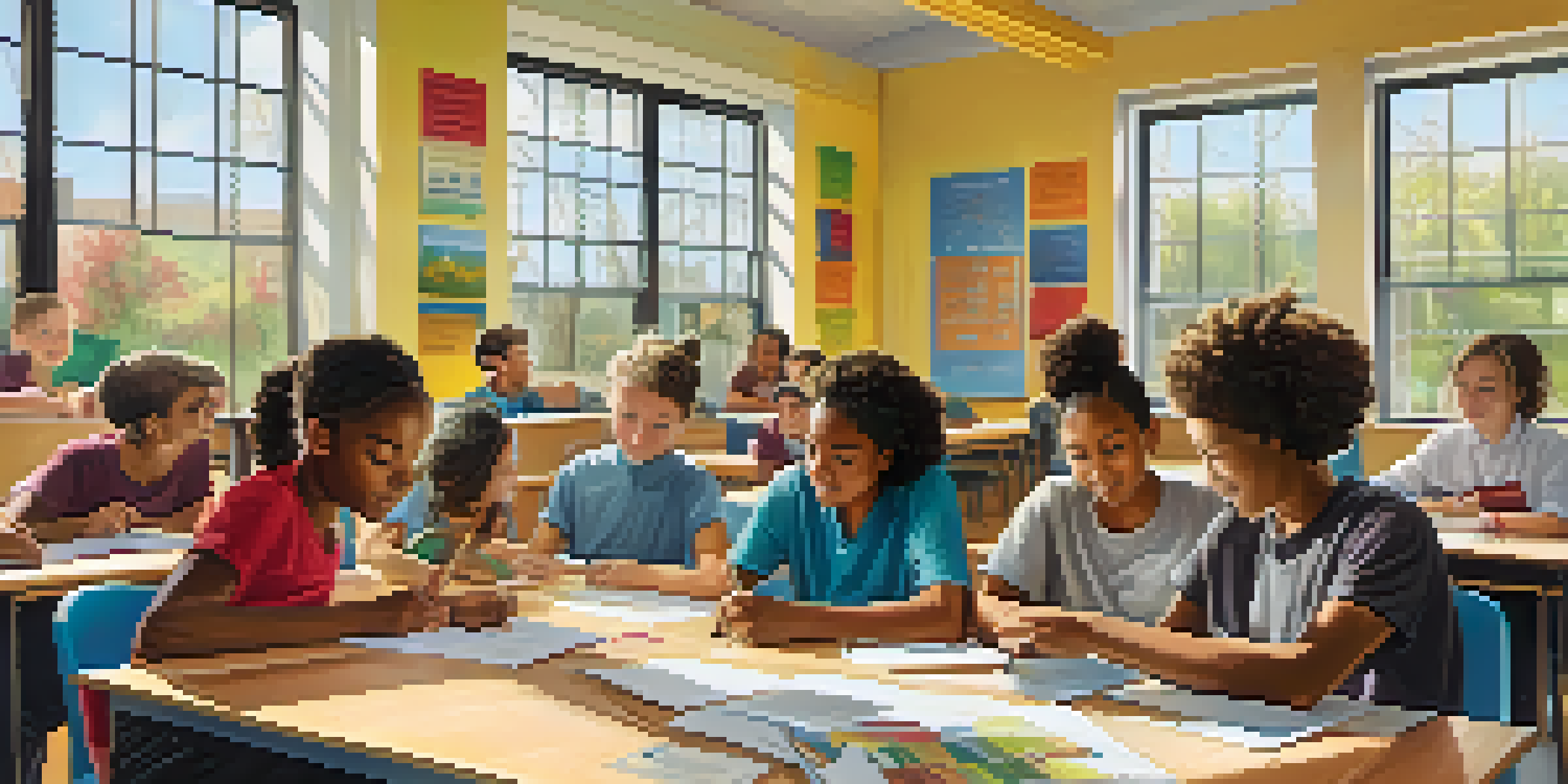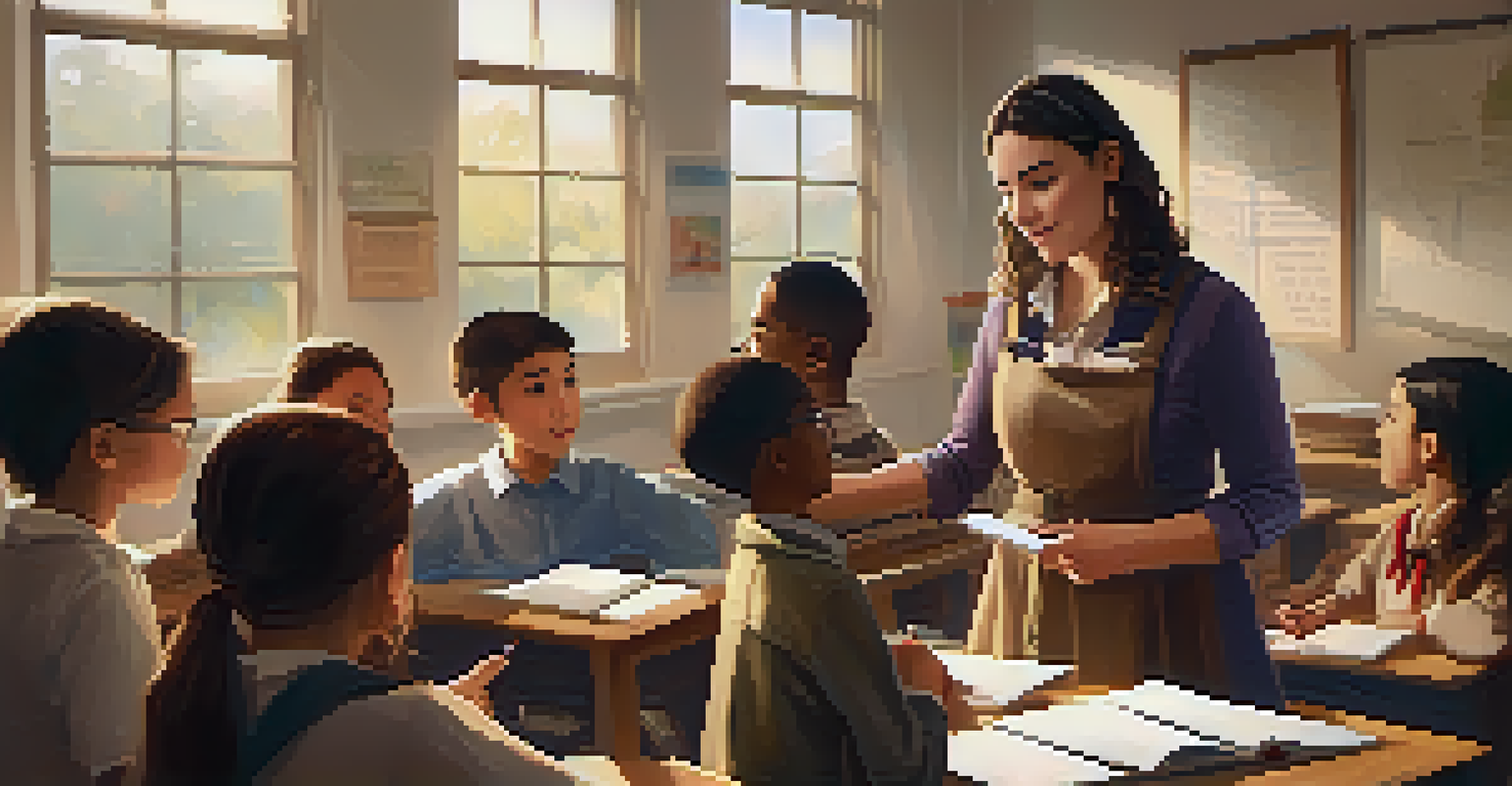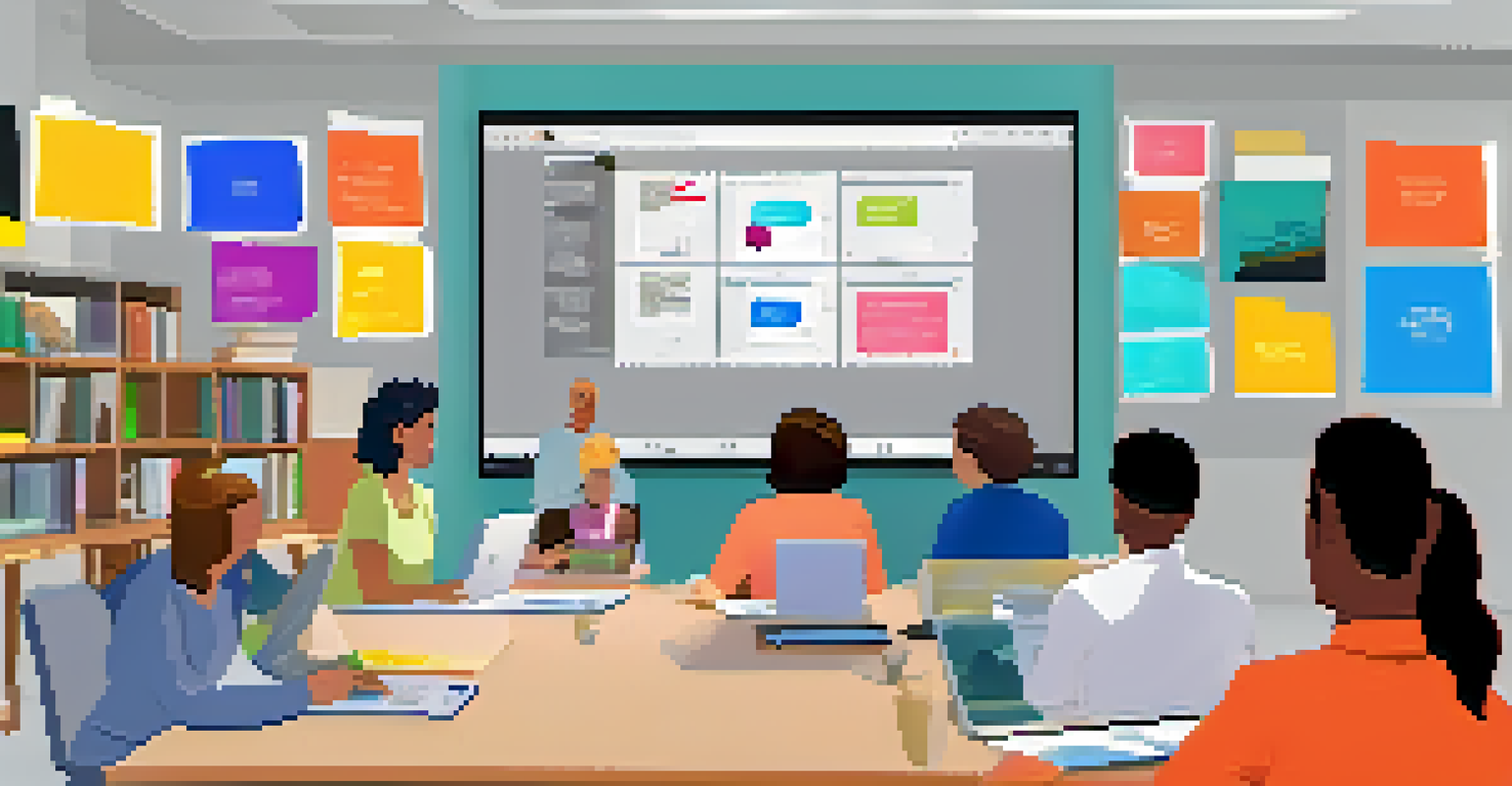Using Collaborative Learning to Support Special Education Needs

Understanding Collaborative Learning in Special Education
Collaborative learning is an educational approach that emphasizes teamwork and interaction among students. By working together, students can share knowledge and skills, which is particularly beneficial for those with special educational needs. This method encourages active participation, making learning more engaging and accessible.
Alone we can do so little; together we can do so much.
In a collaborative setting, students with different abilities can support one another. For instance, a student with strong verbal skills might help a peer who struggles with communication, fostering a sense of community. Such interactions not only enhance learning but also build social skills vital for future interactions.
Moreover, collaborative learning creates an inclusive environment. When students work together, they learn to appreciate diversity and develop empathy, which is crucial for all learners. This approach helps to break down barriers and enables students with special needs to thrive alongside their peers.
Benefits of Collaborative Learning for Diverse Learners
One of the most significant benefits of collaborative learning is its ability to cater to diverse learning styles. Every student has a unique way of absorbing information, and collaboration allows them to explore different perspectives. For example, visual learners might benefit from group projects that incorporate graphics to explain concepts.

Additionally, collaborative learning promotes critical thinking and problem-solving skills. When students collaborate, they are often faced with challenges that require them to think creatively and work together to find solutions. This hands-on approach not only deepens their understanding but also prepares them for real-world situations.
Collaborative Learning Enhances Skills
This approach fosters teamwork, allowing students with diverse abilities to share knowledge and develop critical social skills.
Furthermore, students with special needs often experience a boost in self-esteem when they participate in collaborative activities. As they contribute to group tasks, they recognize their strengths and realize they can positively impact their peers. This confidence can lead to increased motivation and a more positive attitude toward learning.
Creating an Inclusive Collaborative Learning Environment
To effectively implement collaborative learning, educators must create an inclusive environment. This involves setting clear expectations and establishing ground rules that promote respect and cooperation. Teachers should also be attentive to group dynamics, ensuring that all students feel valued and included in discussions.
Collaboration allows us to know more than we are capable of knowing by ourselves.
Flexible grouping strategies can enhance collaboration among diverse learners. For instance, mixing students of varying abilities can encourage peer mentorship, where stronger students support those who may need additional help. This not only fosters a sense of belonging but also enriches the learning experience for everyone involved.
Moreover, incorporating technology can further support collaboration. Tools like shared online platforms allow students to work together, even outside the classroom. These resources can help students with special needs express their thoughts and ideas in alternative ways, making collaboration even more effective.
Strategies for Effective Collaborative Learning Activities
To maximize the benefits of collaborative learning, educators can employ various strategies tailored to students' needs. One effective approach is to create structured activities with specific roles for each group member. This ensures that every student actively participates and contributes to the group's success.
Another strategy is to use project-based learning, where students work together on a task that has real-world relevance. This not only sparks interest but also encourages students to apply their learning in meaningful ways. For example, a project on community service can motivate students to collaborate and address local issues.
Inclusive Environments Foster Growth
Creating an inclusive setting encourages empathy and appreciation for diversity, benefiting all learners, especially those with special needs.
Finally, providing regular feedback is crucial in collaborative learning settings. Teachers should facilitate discussions about group dynamics and individual contributions, helping students reflect on their experiences. This continuous feedback loop fosters growth and encourages students to improve their collaboration skills over time.
Role of Educators in Facilitating Collaborative Learning
Educators play a pivotal role in facilitating collaborative learning. They need to act as guides, helping students navigate group dynamics and encouraging open communication. By fostering a supportive atmosphere, teachers can empower students to express their ideas and opinions confidently.
Additionally, educators should model effective collaboration skills. Demonstrating how to listen actively, give constructive feedback, and resolve conflicts can set a positive example for students to follow. This modeling helps to establish a culture of respect and teamwork within the classroom.
Moreover, it's essential for educators to recognize and address any challenges that arise during collaborative activities. Being proactive in identifying potential issues, such as unequal participation or misunderstandings, can prevent negative experiences. With timely intervention, teachers can help students learn from these challenges and enhance their collaborative skills.
Assessing Collaborative Learning Outcomes
Assessing the outcomes of collaborative learning can be challenging but is crucial for understanding its effectiveness. One approach is to use a combination of formative and summative assessments to gauge both individual and group progress. This can include peer evaluations, self-reflections, and teacher observations.
Incorporating rubrics can also help clarify expectations for collaborative tasks. By outlining criteria for successful collaboration, educators can provide students with a clear understanding of what is expected of them. This transparency encourages accountability and motivates students to contribute meaningfully to group work.
Educators Guide Collaborative Success
Teachers play a crucial role in facilitating collaboration by modeling effective communication and addressing challenges that arise.
Finally, celebrating successes is an important aspect of assessment. Recognizing the achievements of individuals and groups fosters a sense of accomplishment and encourages continued effort. This positive reinforcement can inspire students to engage more deeply in future collaborative learning experiences.
Future Directions for Collaborative Learning in Special Education
As education continues to evolve, collaborative learning will play an increasingly vital role in supporting students with special needs. Future trends may include integrating more technology and digital tools that facilitate collaboration, making learning more accessible. For instance, virtual collaboration platforms can connect students from different locations, broadening their learning experiences.
Moreover, there is a growing emphasis on interdisciplinary approaches in education. Collaborative learning can thrive in environments where teachers from different subjects work together to create integrated lessons. This not only enriches the curriculum but also reflects the interconnected nature of knowledge in the real world.

Finally, ongoing professional development for educators will be essential in mastering collaborative learning strategies. By staying informed about best practices and emerging trends, teachers can continuously improve their methods and provide the best support for their students. This commitment to growth will ultimately enhance the learning experiences of students with special needs.